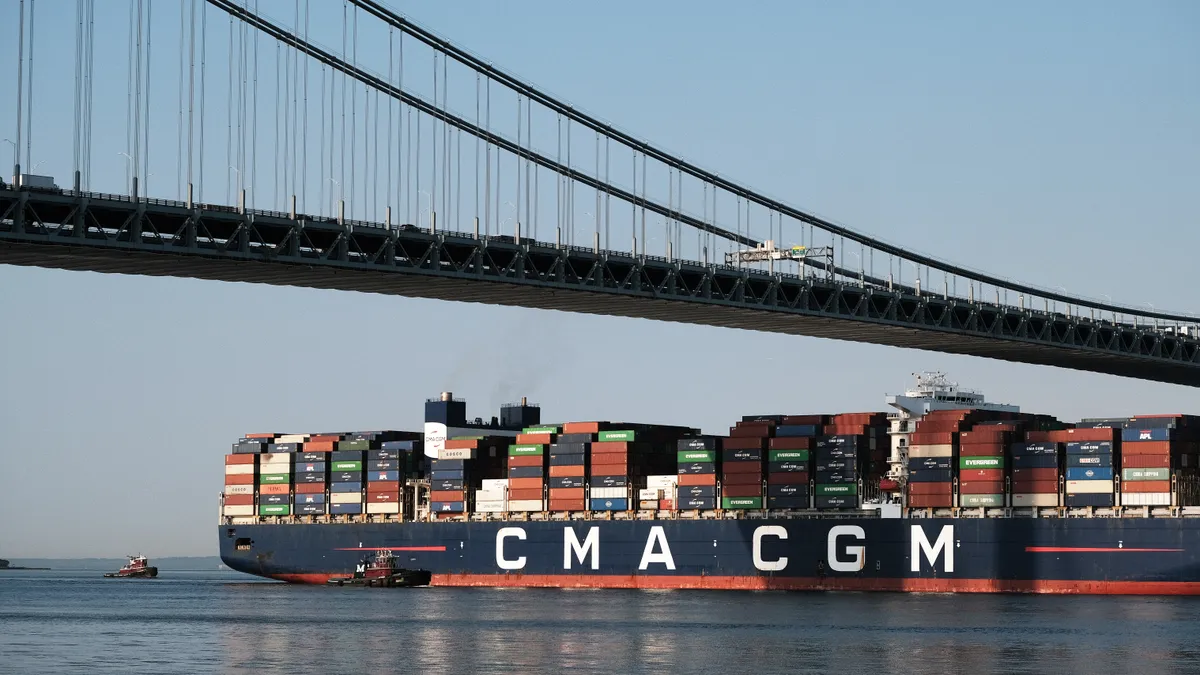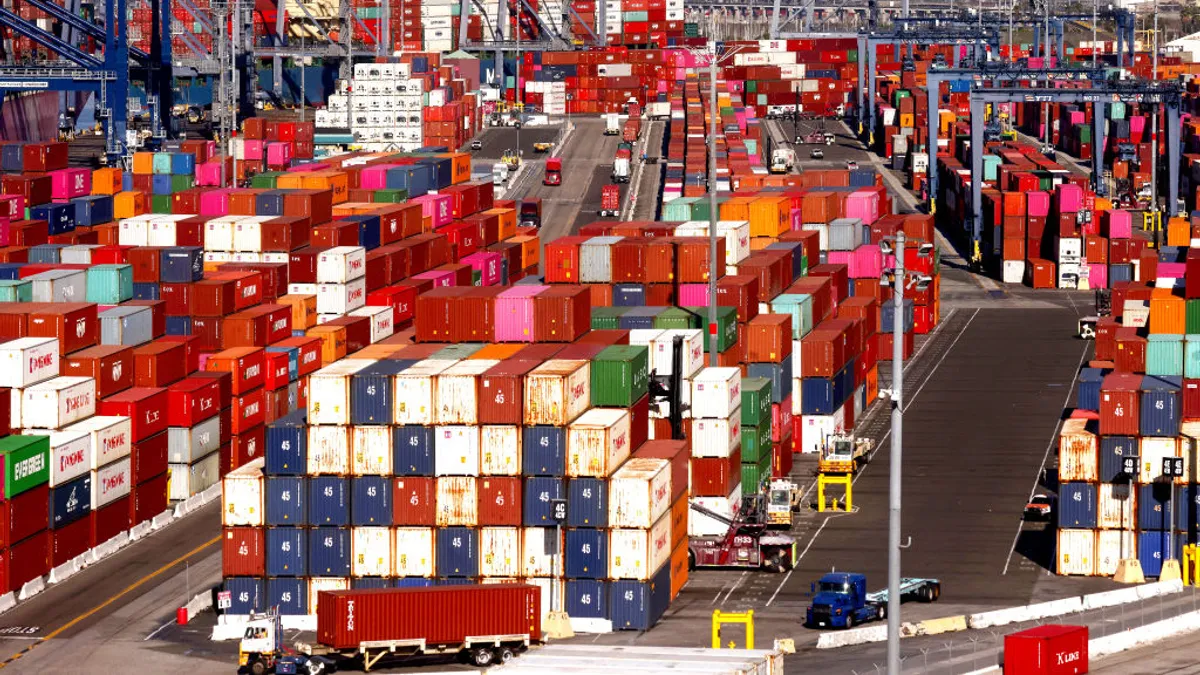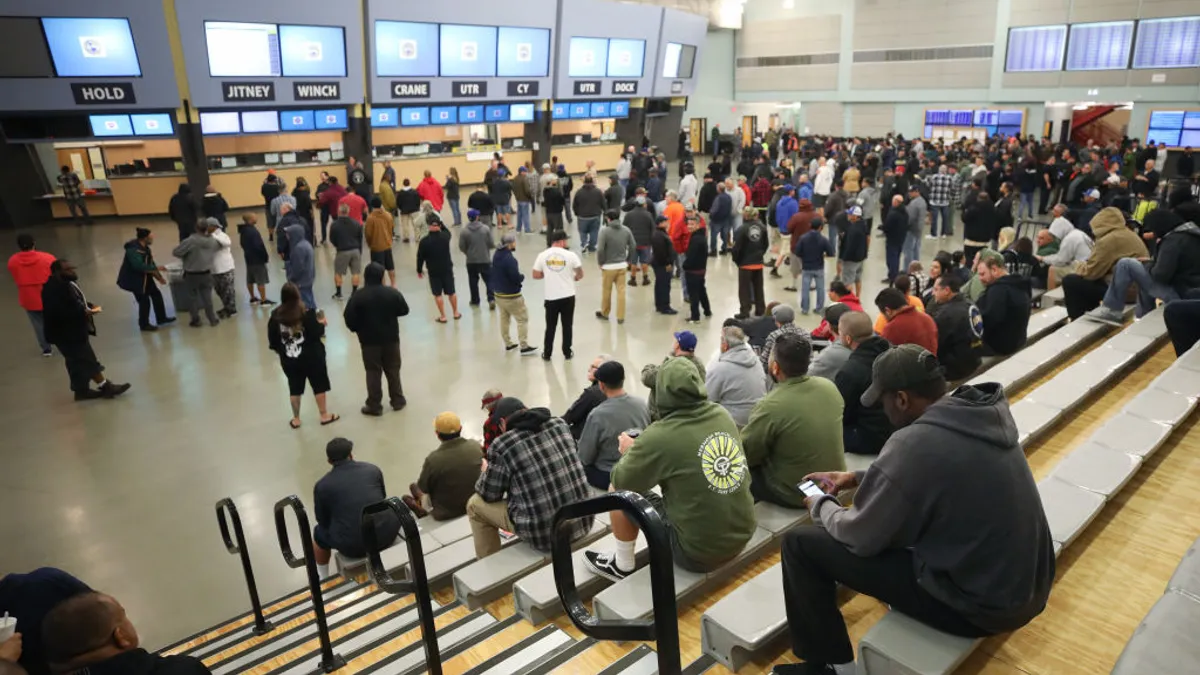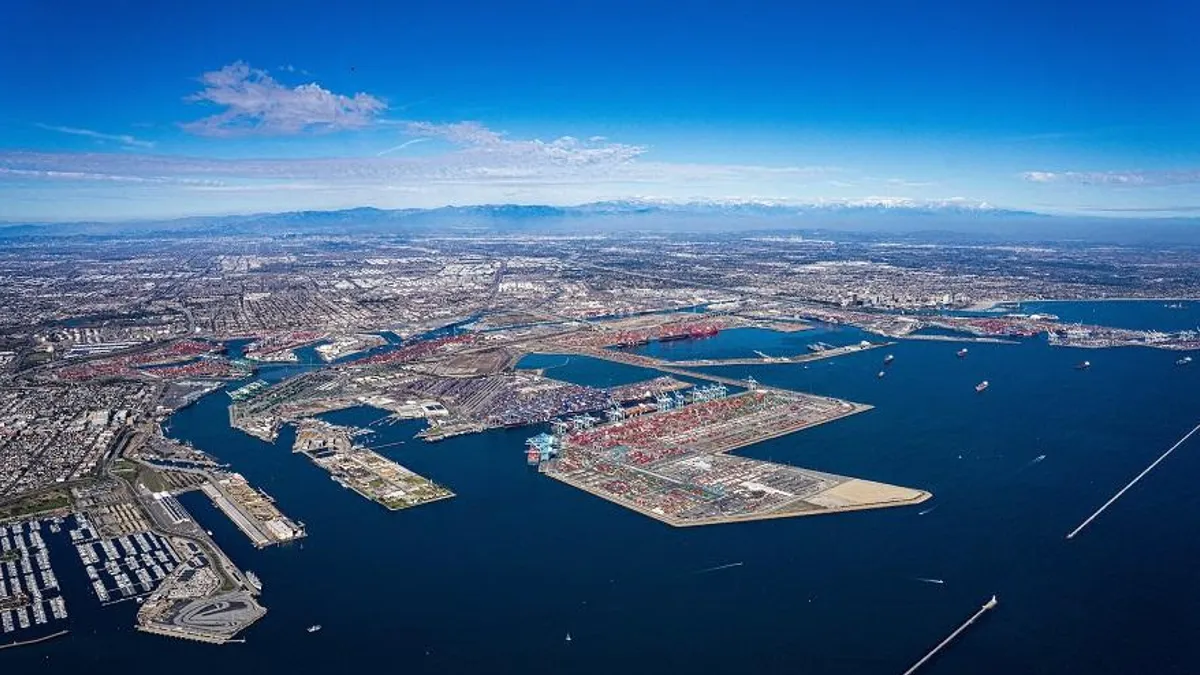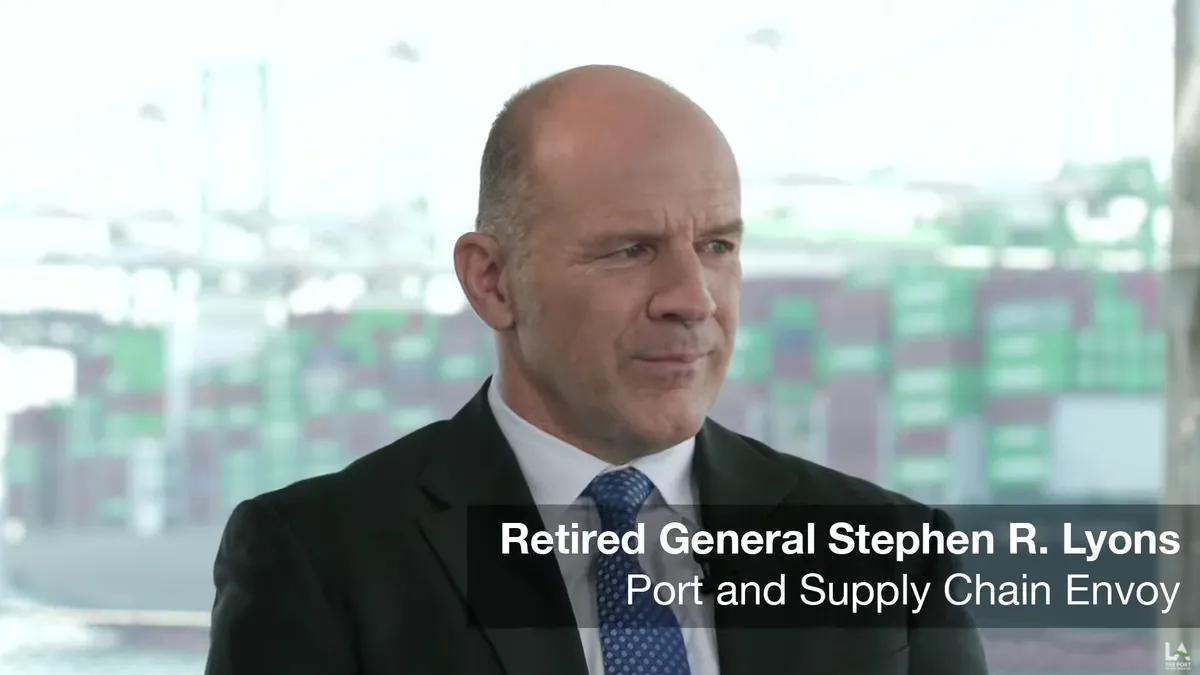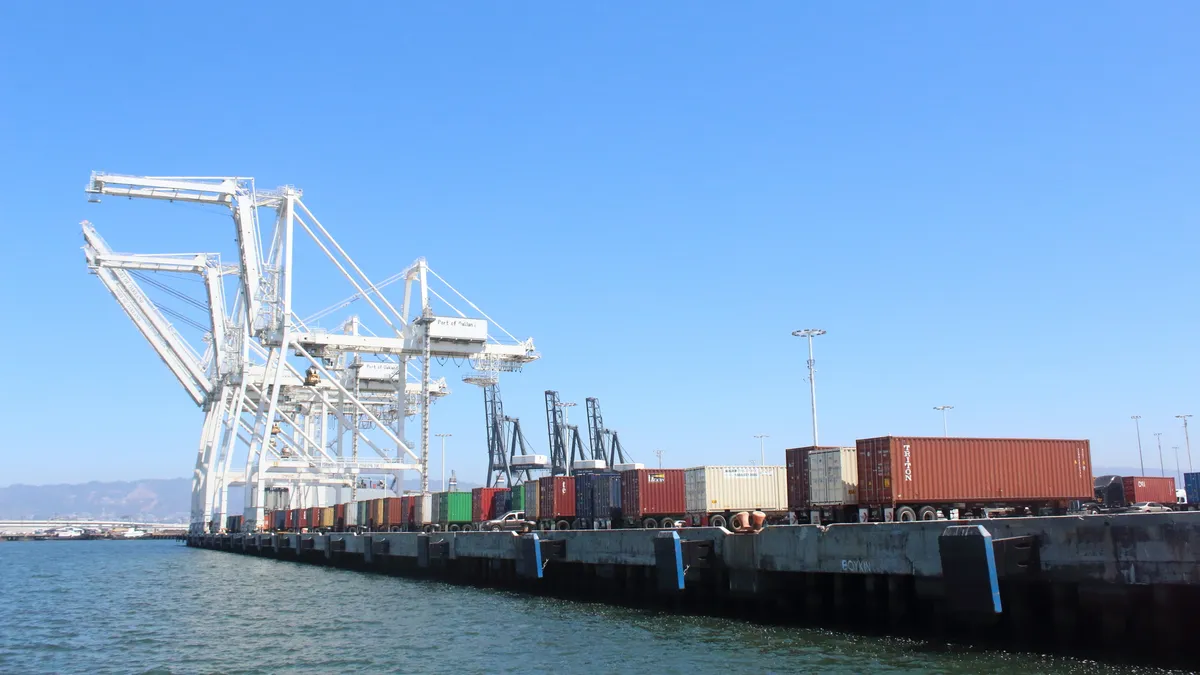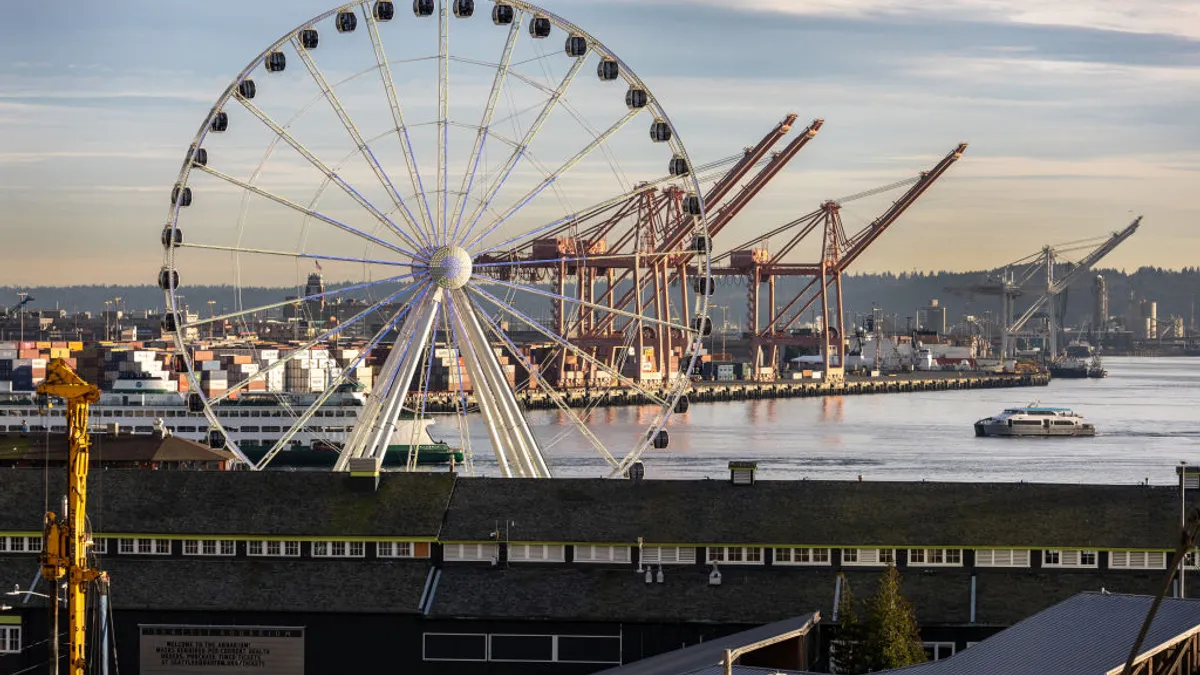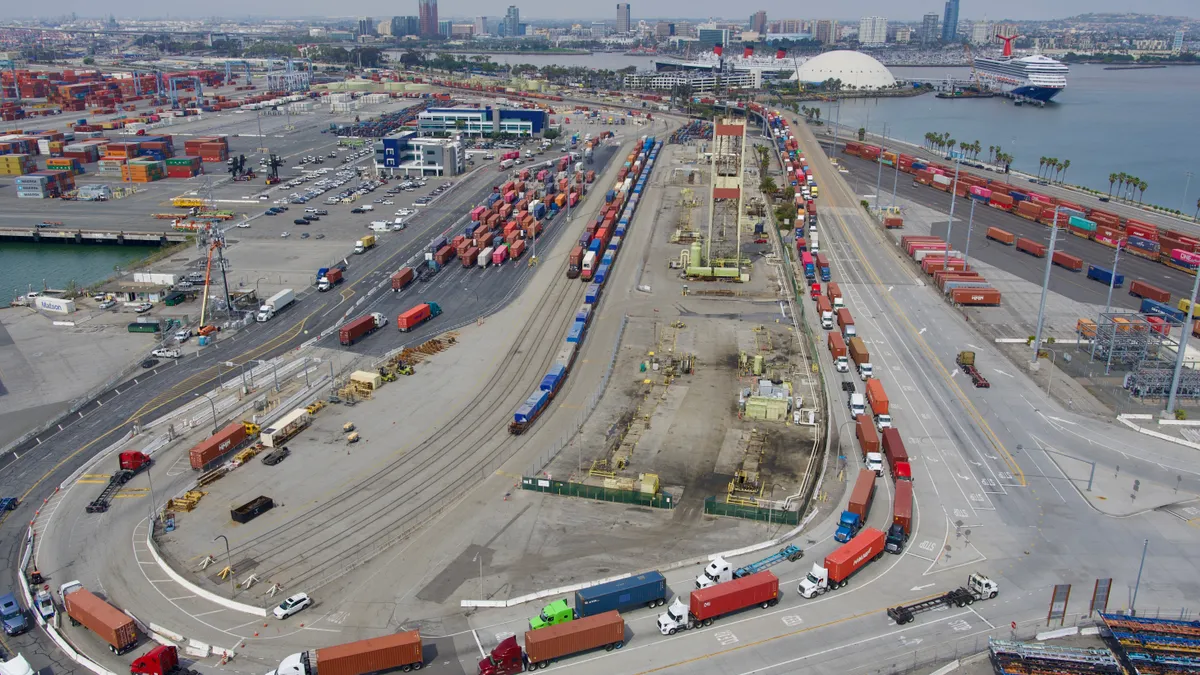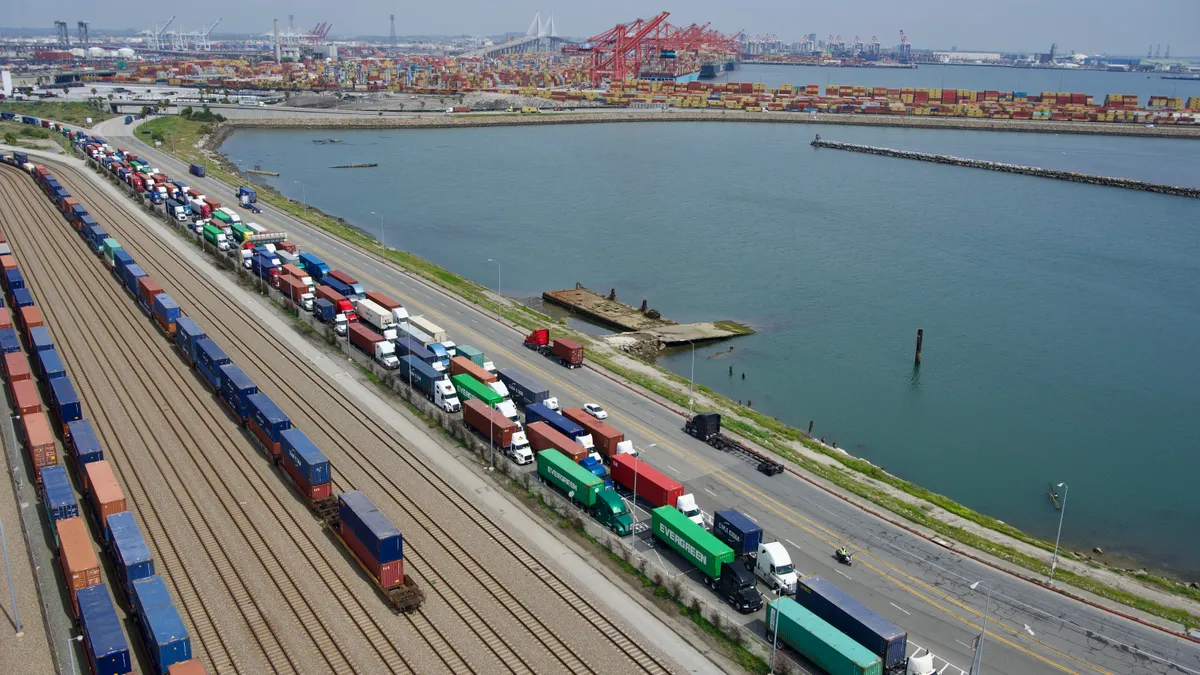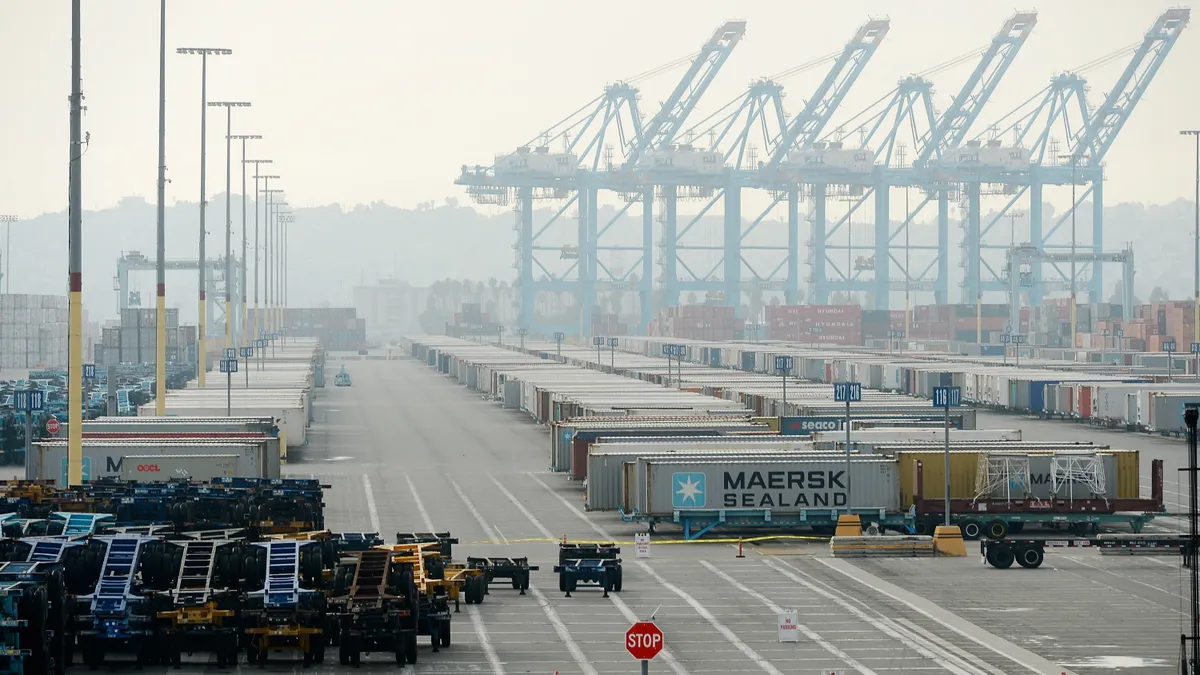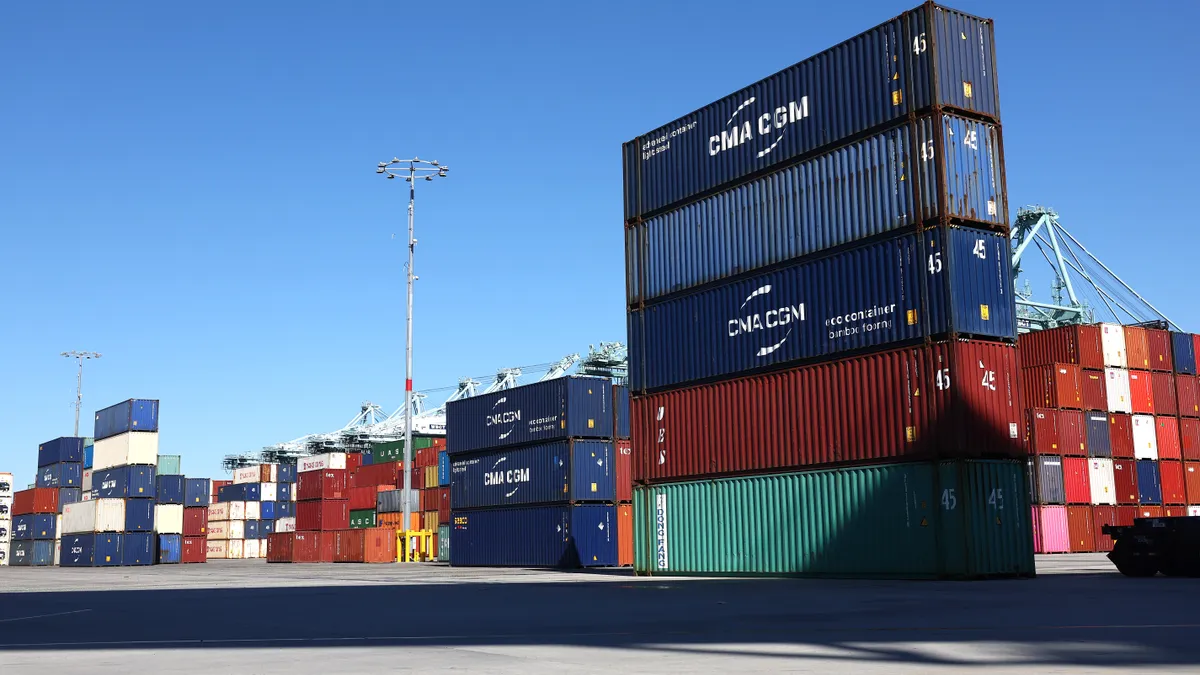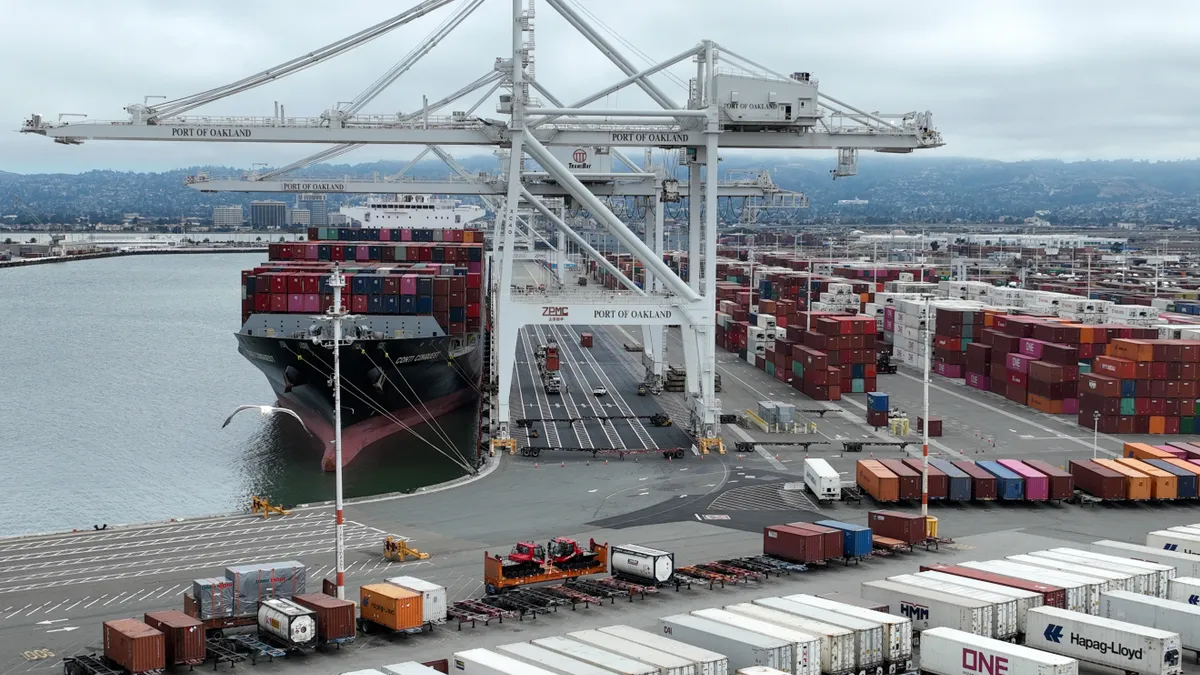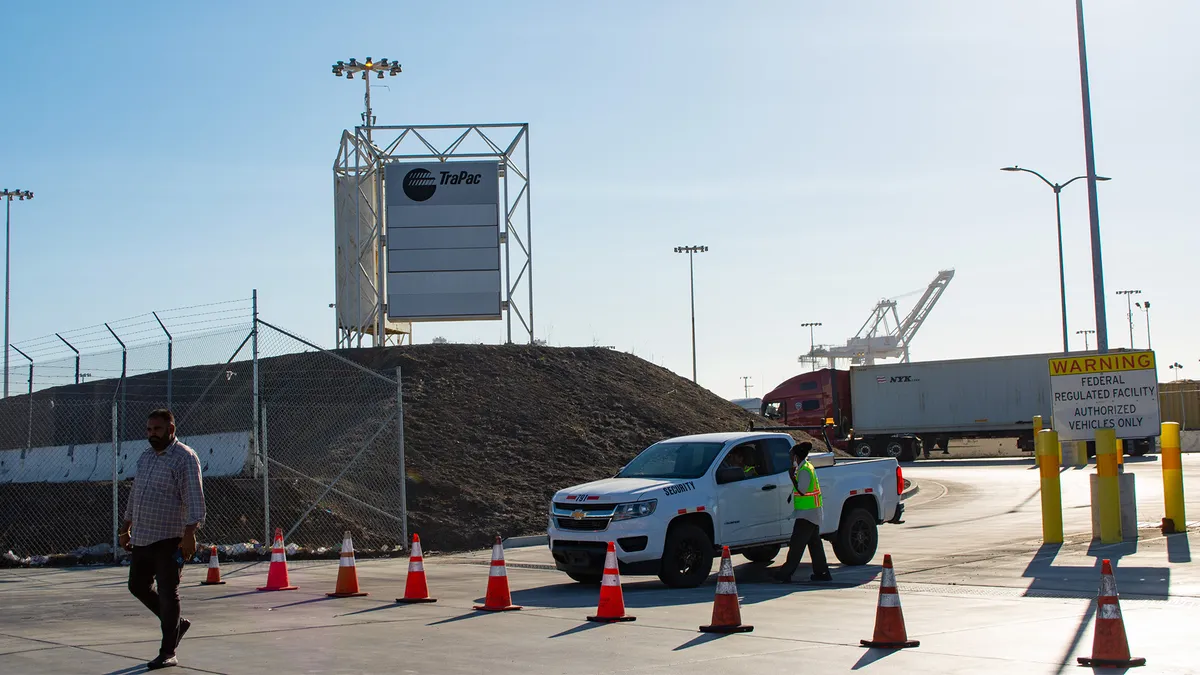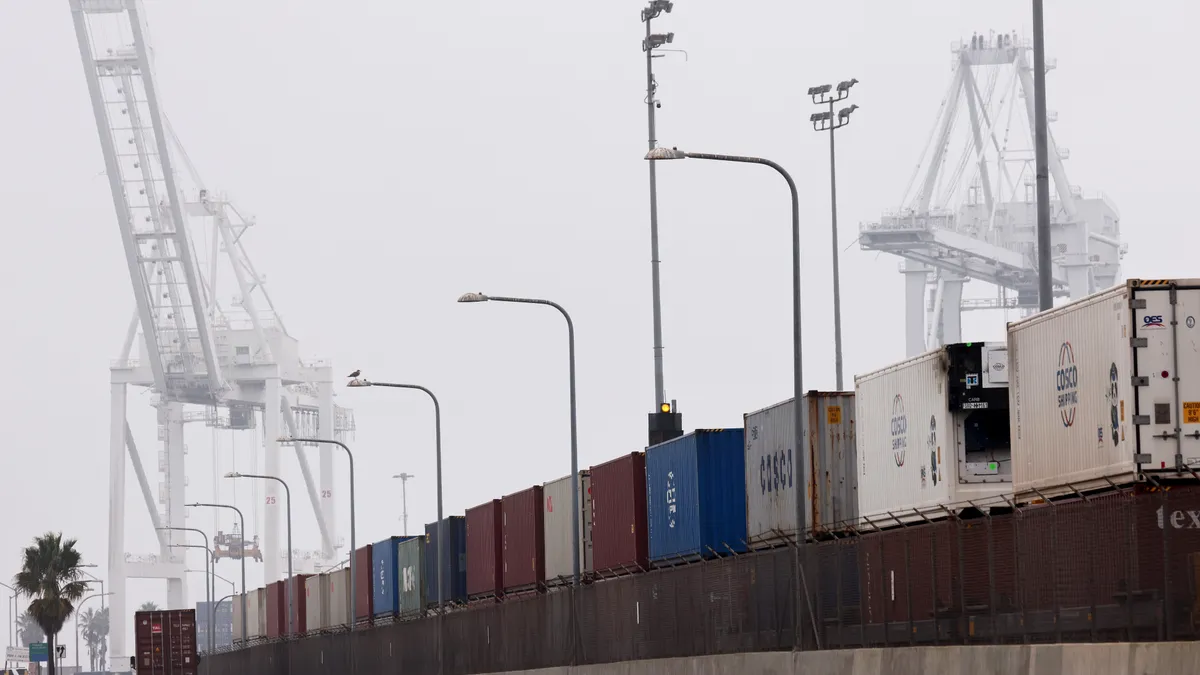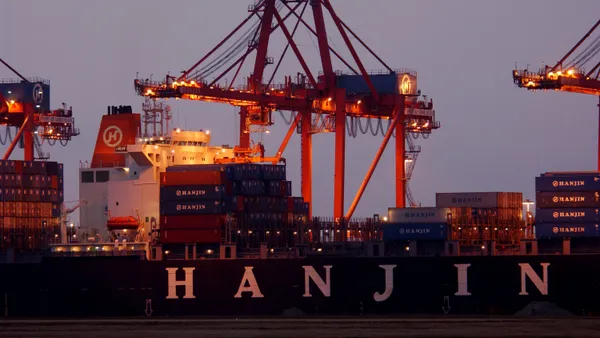On the West Coast, the Port of Los Angeles is looking to attract more shippers as volumes fall from their record-breaking heights. Along the East Coast, the Port of New York and New Jersey’s leadership touts that it has been the nation’s busiest container port for two months running.
"We've been in the number one position here in the United States for 22 consecutive years. One or two months is not going to create a trend," Gene Seroka, the Port of Los Angeles' executive director, said in a Tuesday media briefing. Nonetheless, he said the port has been on a tour for months, knocking on shippers' doors to get some cargo allocation back.
While it’s not the only factor responsible for their diverging cargo trends, experts and port leaders agree the shadow of negotiations between the International Longshore & Warehouse Union and Pacific Maritime Association has motivated shippers to divert more U.S.-bound cargo from the west to the east. Companies deployed a similar tactic for rail cargo in Q3 to shield against a potential freight rail shutdown, which still remains a concern.
"Even though both sides — the PMA and the ILWU — have put out two jointly signed media releases, stating they will not strike nor lockout, there's still skepticism," Seroka said.
The threat of a strike has been enough to spur action from shippers, altering the nation's flow of cargo along the way. But in the process, shippers have found diverting freight — like other supply chain contingency plans — can create tradeoffs like longer lead times and added logistics complexity.
East Coast ports snag import share from the West
Diversion activity became more pronounced over the last couple of months after the ILWU and PMA failed to reach a labor agreement by the July 1 deadline, said Glenn Koepke, GM of Network Collaboration at FourKites.
In October, 62% of FourKites customers’ import shipments arriving to U.S. ports went to the East Coast, versus 38% to the West Coast, according to company tracking data. That’s the largest proportion for the East Coast so far this year and exceeds its 57% share in October 2021.
The volatile ocean shipping conditions sparked by the COVID-19 pandemic — including sharp swings in rates and congestion levels — have led companies to renegotiate their contracted rates and capacities more frequently, according to Koepke. This has allowed shippers to be more nimble about where their cargo arrives.
“If you were to compare diverting cargo now versus four years ago, in essence, the process of which you procure ocean freight enables a little bit more efficient diversion today, because historically, it’s been annual contracts,” Koepke said. “Now you see quarterly type contracts.”
East Coast ports surpass West Coast in imports during labor talks
At the Port of Savannah, it’s unclear how much of its recent import growth is directly tied to diverted cargo, according to Cliff Pyron, chief commercial officer at the Georgia Ports Authority. But in the quarter ending in September, 166 importers were either completely new customers or grew their Savannah trade by 20% or more.
“Since FY2001, the Port of Savannah has gained cargo, both over the short- and long-term, with each labor action on the West Coast,” Pyron said in emailed responses to Supply Chain Dive. “We are already hearing from port customers who are shifting cargo to the East Coast as a hedge against a potential strike.”
Some shippers fled railroads in Q3
Concerns over labor-related disruptions don’t dissipate as shippers’ cargo moves inland. With negotiations between railroads and unions still in progress, companies have adjusted their supply chains to hedge against a potential strike or lockout.
Carriers touched on this shift during recent quarterly earnings calls. Schneider encountered intermodal volume erosion in September as customers looked to avoid uncertainty on the railroads by moving to trucks instead, which particularly hurt activity on shorter hauls.
Norfolk Southern executives said the railroad took a “no-surprises approach” in Q3 by speaking with customers about how they could keep their cargo moving. The company estimates the approach accounted for roughly 40% to 50% of the quarter’s volume decline, primarily in its intermodal markets.
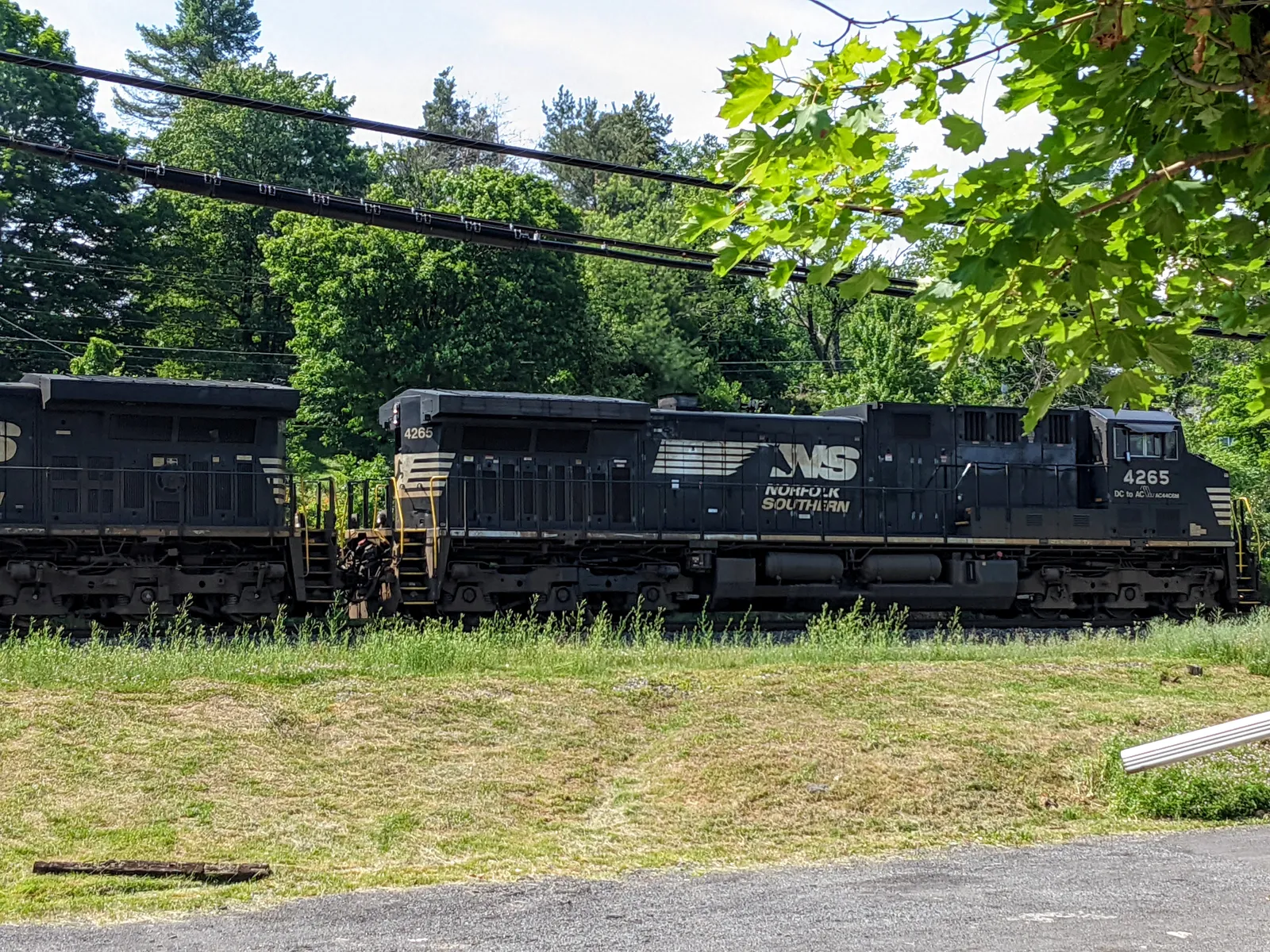
Railroads and three unions reached a tentative agreement Sept. 15 to avert a freight shutdown, quelling some shipper concerns. And for now, there isn’t a flood of freight moving from rail to truck — Chris Caplice, DAT Chief Scientist, said in an emailed comment Nov. 7 that he hasn’t noticed any changes in trucking trends on lanes due to potential rail strikes.
But the threat of disruption this year still looms, with the deadline to avoid a rail strike or lockout now set for Dec. 4.
A railroad shutdown would require greater supply chain adjustments than just shifting all volume to trucks. The Association of American Railroads estimates that it would take roughly 467,000 additional long-haul trucks per day to move all railroad freight. However, it also noted that barges may be able to pick up some slack in areas with navigable rivers.
Cargo diversion introduces new tradeoffs
Although the tactic of diverting cargo can mitigate labor-related disruptions, it introduces other potential supply chain drawbacks.
When it comes to rail transportation, moving cargo to trucks can be an effective solution for automotive companies that rely on rail for outbound shipping, said Julie Gerdeman, CEO of Everstream Analytics. However, customers in the chemical or food processing industries can’t do so as easily based on the product they move, and shippers have to also keep pricing and contractual considerations in mind.
As for ocean shipping, rerouting cargo from Asia through the Panama Canal to avoid risks on the West Coast lengthens lead times. While retailers with bloated inventories may be less concerned with added days in transit, it can be a bigger issue for other sectors. Compounding this are inflationary pressures that companies of all types are looking to mitigate.
Cargo diversions may be a temporary measure as a result, said Sourcing Industry Group President and CEO Dawn Tiura: “You’re going to go back to the lowest total cost alternative.”
Quick jumps in import activity can also strain port operations, sparking congestion concerns for cargo that has already seen added lead times due to diversions.
As other retailers scrambled to divert their cargo from the West Coast, The Children’s Place’s inbound supply chain encountered East Coast port congestion in Q2, which contributed to an increase in the company's inventory levels.
Still, as the risk of strikes at ports or railroads incentivizes companies to strengthen their contingency plans, FourKites's Koepke expects cargo diversions will become a more regular part of a shipper’s playbook going forward.
“What we hear quite a bit is shippers are using this in their planning models, so as they look to future operations based on different global events or socioeconomic events, they will look to route cargo to certain places,” Koepke said.
Sarah Zimmerman contributed to this report.
Editor's note: This story was first published in our Logistics Weekly newsletter. Sign up here.



